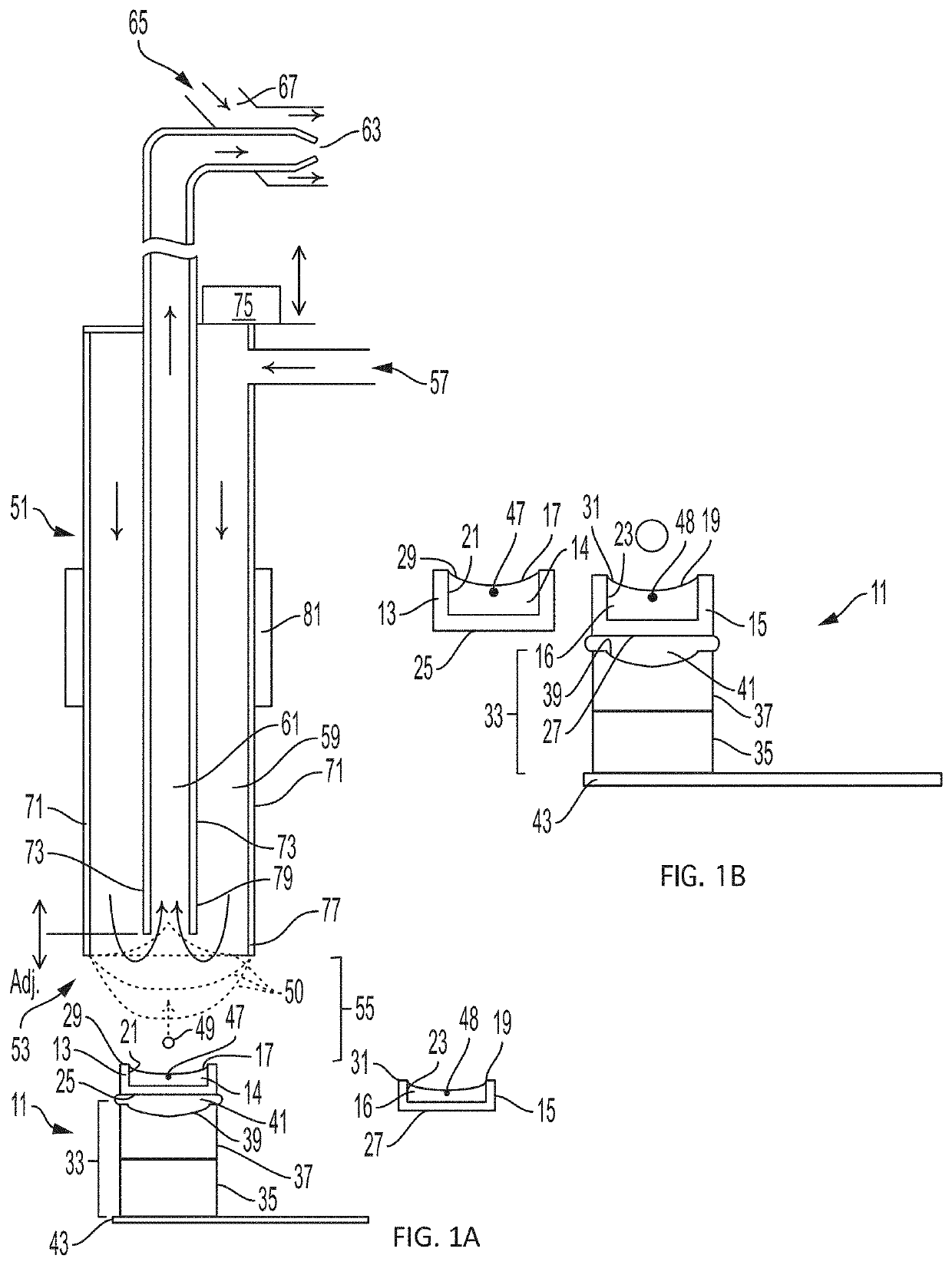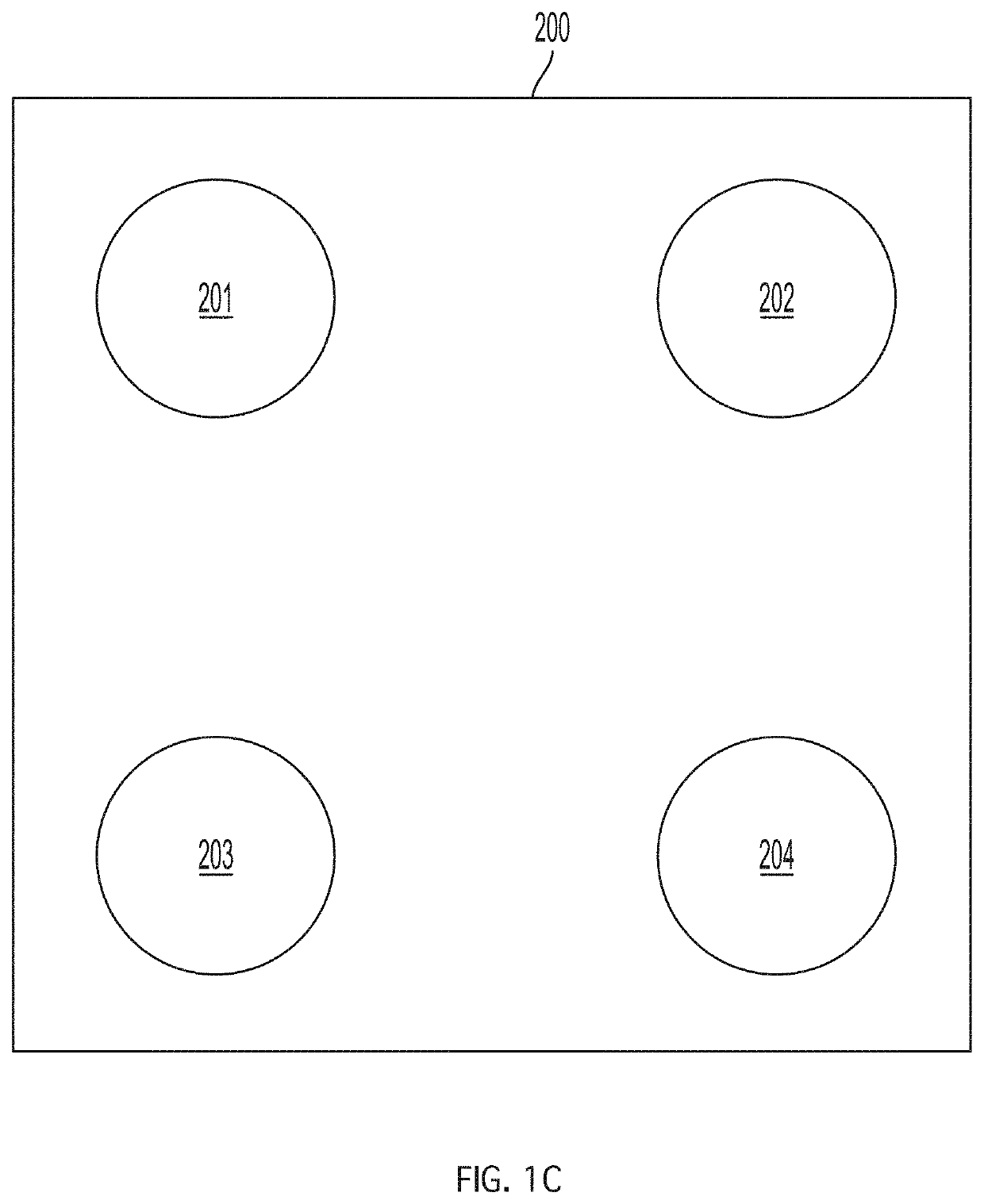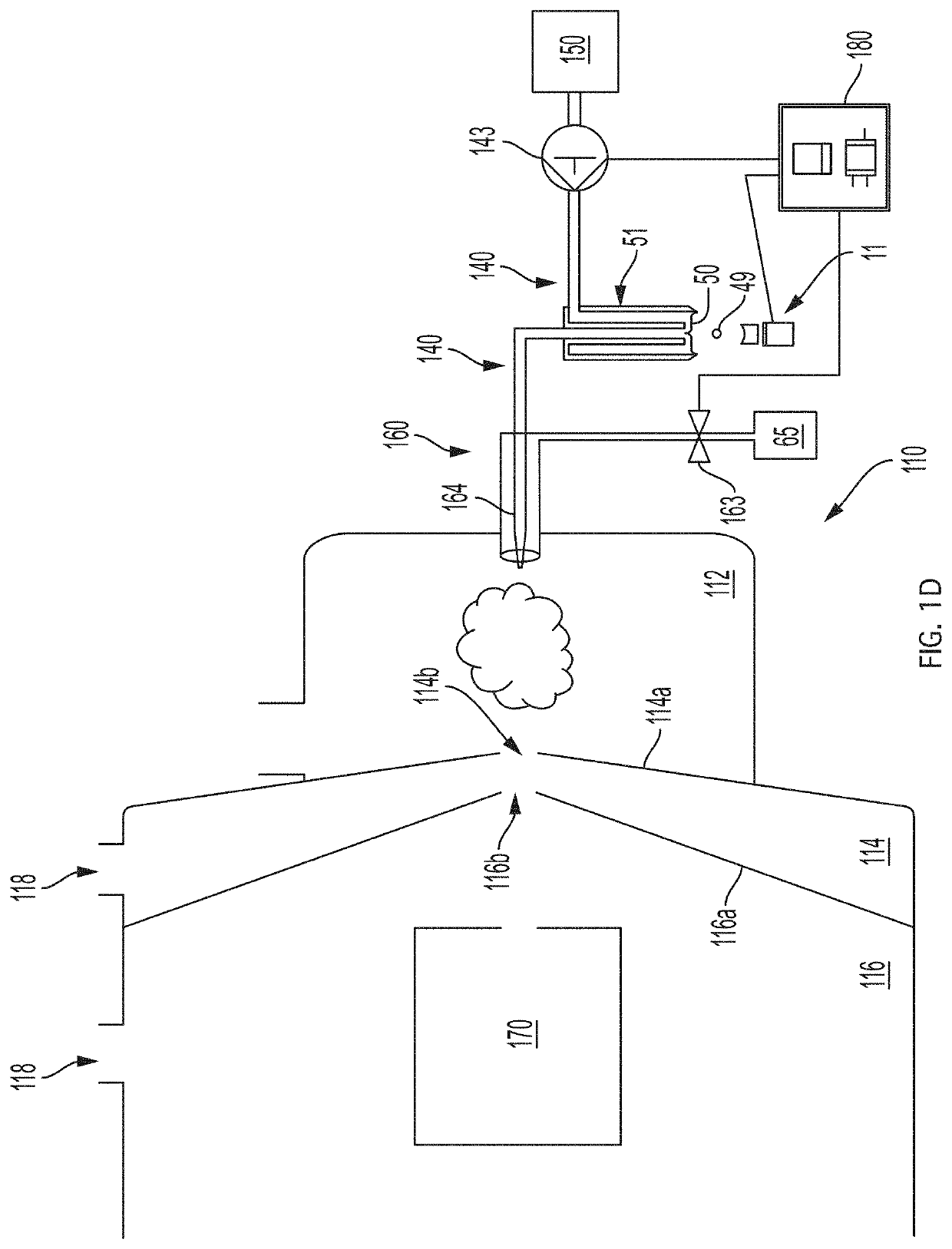System and method for the acoustic loading of an analytical instrument using a continuous flow sampling probe
a technology of continuous flow sampling and system and method, which is applied in the field of systems and methods for transporting fluid samples to an analytical instrument, can solve the problems of increasing sampling speed at the cost of sensitivity, increasing sample loading time, and still required sample separation, etc., and achieves high repetition rate, rapid sample processing and generation of droplets
- Summary
- Abstract
- Description
- Claims
- Application Information
AI Technical Summary
Benefits of technology
Problems solved by technology
Method used
Image
Examples
example 1
[0112]This example describes how the flow configuration at the open port of the probe correlates with the ion peaks obtained in a real-time mass spectrometric (MS) evaluation. In this experiment, source wells were loaded with 50 μL of reserpine, as analyte (Sigma-Aldrich, St. Louis, Mo.) at a concentration of 100 nM in 50:50 MeOH:H2O. The flow probe was positioned above the source well at a distance of approximately 10 mm, aligned to center the flow probe over the source well, and oriented so that the open port of the flow probe captured droplets acoustically ejected vertically upward from the source well. The carrier solvent in the flow probe was 100% methanol and the solvent flow rate in the tubing annulus was varied from 40 μL / min to 55 μL / min by adjusting the active flow control solvent pump. The flow rate of solvent into the inner capillary tube was fixed by the gas flow of the aspirating nebulizer at the mass spectrometer input.
[0113]2.5 nL droplets were acoustically ejected o...
example 2
[0114]The source wells were filled with 50 μL of analyte 1 nM reserpine in a matrix of 50% MeOH:H2O and the flow probe solvent flow rate adjusted to produce a pendant drop of 100% MeOH at the tip of the flow probe. The ADE system was calibrated to eject 2.5 nL droplets with repetition rates adjusted from 1 Hz to 200 Hz.
[0115]As shown in the mass spectra of FIG. 4A, single 2.5 nL droplets of 1 nM reserpine (2.5 attomol) are below LOQ in the pendant drop mode. Referring to FIG. 4B, a sample composed of five droplet injections (12.5 nL in total; all within one second) was analyzed and demonstrated good reproducibility with respect to peak shape, with a peak width typically less than 30 seconds. As illustrated in FIGS. 4C-4G, peak area was found to increase approximately linearly with the number of droplet injections per second over the full range of 5 droplet injections per second to 200 droplet injections per second, although small variations in the size of the pendant droplet were fo...
example 3
[0116]In this example, the method of Example 1 was repeated except that the solvent pump flow rate was adjusted to operate the flow probe in vortex mode, with 10 nM reserpine analyte and a matrix of 50% MeOH:H2O in the source well. Referring to FIG. 5A, in this case single droplet injections (2.5 nL×10 nM=25 attomol) were found to give clear MS peaks with a two-second width at baseline. Referring to FIGS. 5B-5D, the peaks obtained were consistently narrow (less than about 5 seconds at baseline) for injections of up to 25 droplets in one second. FIGS. 5E-G illustrate resulting peaks for 50, 100, and 200 droplet injections per second for comparison.
[0117]The relationship between peak shape and injection time was evaluated, where the injection time is the time period between the first droplet ejection and the last droplet ejection within a single multi-droplet ejection event. 50 droplets were transferred over a range of injection times from 0.125 to 5 seconds, in vortex mode. FIG. 6 pr...
PUM
 Login to View More
Login to View More Abstract
Description
Claims
Application Information
 Login to View More
Login to View More - R&D
- Intellectual Property
- Life Sciences
- Materials
- Tech Scout
- Unparalleled Data Quality
- Higher Quality Content
- 60% Fewer Hallucinations
Browse by: Latest US Patents, China's latest patents, Technical Efficacy Thesaurus, Application Domain, Technology Topic, Popular Technical Reports.
© 2025 PatSnap. All rights reserved.Legal|Privacy policy|Modern Slavery Act Transparency Statement|Sitemap|About US| Contact US: help@patsnap.com



